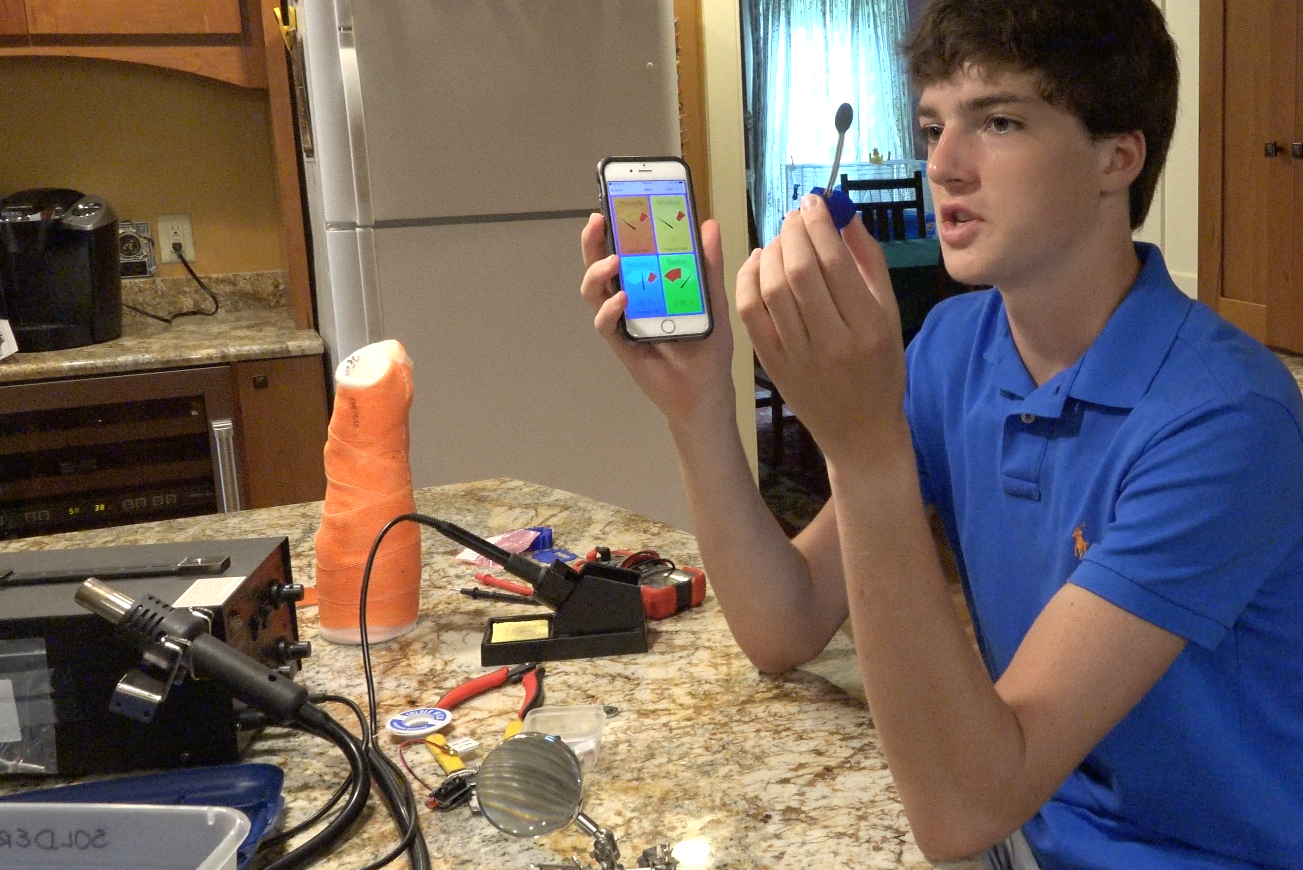By Maria Welych
Alexander Wulff’s love of technology actually started with his love of cooking when he was a middle school student. He enjoyed cooking and wanted a way to share his recipes, so he decided to create a website. His eyes were opened.
“I still cook, but I found out I really love technology,” said Wulff, 17, a senior at Skaneateles Senior High School. He started making websites and then set up a business, Confer Apps, that creates applications for iPhones, iPads, and Apple Watches. His app, WatchWeb, is the most downloaded browser for Apple Watches.
But it is his work for his Central New York Science & Engineering Fair that has garnered him national attention. He has twice submitted the top senior division project, earning him all-expenses paid trips to the Intel International Science and Engineering Fair. And he has twice returned with a fourth-place Grand Award in his category, Embedded Systems, and a $500 check.
“I’m really fascinated by the way you can combine different hardware and sensors and integrate those with software systems,” Wulff said. His last two science fair projects took it a step further, combining technology with biological processes to help people.
Wulff’s path to assistive technology came after first using his skills to play practical jokes on his family and impress his teachers. “One of the things I did was I created a little mint tin with some vibration motors in it,” he said. “So when it got moved even the slightest amount, it would vibrate like crazy.”
But things changed for Wulff. “I eventually got tired of producing basically inconsequential devices and I started to get more into applying my technology to real-world problems,” he explained.
His project in the 2015 CNYSEF, when he was a sophomore, grew out of an inconsequential project: a self-guiding robot. “So I kind of figured out that, hey, I was using this one sensor to make a robot essentially see,” Wulff said. “So why can’t I correlate that same technology to help blind people see?”
The open-source device he created, called HaptoTech, is an indoor sensor that detects nearby objects and alerts blind or visually impaired people if they are getting too close. The sensors are meant to be used in multiples and cost about $5 or less each, so a person can easily afford a complete set.
Wulff has shown his device to members of the National Federation of the Blind, but he added it needs further refinement before it can become a marketable product.
This March, Wulff presented a totally new science fair project, which again netted him top honors locally and a trip to Intel ISEF. He built a sensor that, when installed in a cast or splint, can monitor the broken limb, predict if there will be complications, and alert the wearer’s doctor of any problems. The device has sensors that monitor the pressure, moisture, and temperature inside the cast, factors that can indicate swelling, skin damage, or infection.
But Wulff’s device, called CastMinder, does more than that. A second unit embedded into the cast combines a transcutaneous electrical nerve stimulation device with a bone growth stimulator to help bones heal faster and with less pain. Both parts of CastMinder are controlled by an iPhone app that Wulff wrote.
Inspiration for this project came from his father, Dr. Warren Wulff, an orthopedic surgeon with Syracuse Orthopedic Specialists who specializes in spinal surgery. “I heard him talking about a patient who had complications,” Alexander Wulff said. “You’d never think that something as ubiquitous as a cast would have problems.”
He may have also inherited his tinkering genes from his father, who graduated from Cornell University with a mechanical engineering degree before becoming a surgeon.
“I was working in Oregon, in charge of making hip, knee, and shoulder replacements,” Dr. Warren Wulff said. “After a few years, I gravitated more toward the medical side of things. But I never gave up on engineering.”
Dr. Wulff said that his engineering background helps him daily in his orthopedic work. “It helps to have a mechanical engineering understanding of how all biological functions work,” he said. “I use biomechanical principles to figure out how to put things back together.”

He is very proud of his son’s work with MindCaster. “He took a significant problem we face in orthopedics and came up with a workable solution,” Dr. Wulff said, adding that he will be happy to use CastMinder when it becomes a product.
Alexander Wulff has conducted some small-scale testing of CastMinder, applied for a patent, and entered it into the Hackaday Prize 2016 contest. The competition, which awards prizes of up to $150,000, seeks to reward inventors who build something that makes a difference in people’s lives. Award winners will be announced Oct. 22.
“I believe in the transformative power of technology, that through technology anyone can make the world a better place,” the high school senior said. “I have all this knowledge I've gained through my few years of inventing and it's been my constant goal to apply this technology to real world problems that can have a global impact. I hope to continue building upon my skillset in the future and hopefully make a career out of what I'm doing now.”
Learn more about biomechanics and devices that mimic biological processes, including sensors for the blind, at the MOST’s new visiting exhibit, Nature’s Machines: Biomechanics. It’s on display from now until Jan. 8, 2017. For information on hours and prices, visit www.most.org.
